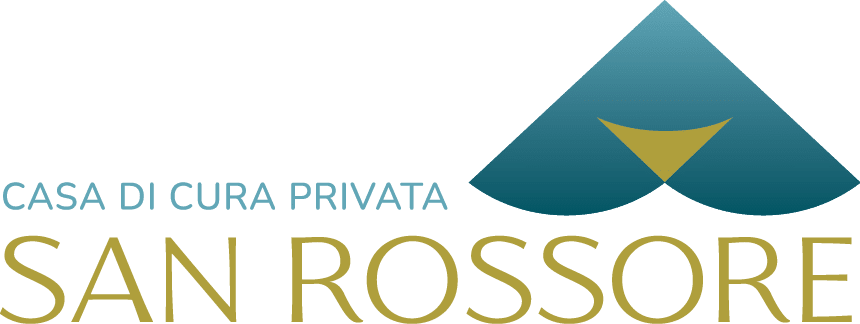Eating Disorders Center
For many years, the Center for the Treatment and Care of Eating Disorders has been operating at the Casa di Cura San Rossore.
Our Center consists of a team of specialized professionals (physician, psychiatrist, dietitian, psychologist) for an advanced approach that, depending on the need, allows different treatment modalities and pathways.
Eating Behavior Disorders or Disorders of Eating and Nutrition (DAN) are complex disorders characterized by psychological distress manifested by altered eating behaviors and habits related to an excessive preoccupation with weight and body shape.
Major eating disorders-anorexia nervosa, bulimia nervosa, Binge Eating Disorder (BED) and eating disorders not otherwise specified-are one of the most common health problems among young people in our country, with a higher prevalence in the female gender.
– Anorexia nervosa
– Bulimia nervosa
– Uncontrolled Eating Disorder (Binge-Eating Disorder, BED)
– Nutrition or Eating Disorders not otherwise specified (e.g. subthreshold forms of Anorexia and Bulimia, Night Eating Syndrome, …)
– Orthorexia, Reverse Anorexia or Vigorexia
For these diseases, national and international guidelines indicate the need for diagnosis and treatment activities to be carried out in integrated multidisciplinary teams of specialists with specific training and experience in clinical settings.
The integrated multidisciplinary pathway for the treatment of Eating Disorders, based on psychotherapy, psycho-nutritional rehabilitation interventions, medical management and, if necessary, pharmacological interventions, also includes family support, family therapy, assisted meals, Food Familiarization Training (TFC), therapeutic group pathways.
Anorexia Nervosa
Anorexia nervosa is characterized by food restriction, underweight (more or less severe), intense fear of gaining weight, and body image disturbance; one of the most serious aspects is denial of the disease and resistance to therapeutic treatment.
In the general population older than 18 years of age and female, lifetime prevalence rates of 0.9% are estimated for anorexia nervosa; the incidence of anorexia nervosa is estimated to be at least 8 new cases per 100,000 women in a year, with increasingly early onset and late diagnosis. In studies of clinical populations, males account for 5% to 10% of anorexia nervosa cases.
Adolescence is the most frequent age of onset, and the disorder manifests progressively with reduction in daily caloric intake (iron diet) and through manifestations such as digestive disturbances, selectivity about food, reduced appetite, and excessive and obsessive use of physical activity. This leads to a more or less pronounced drop in body weight, sometimes reaching life-threatening levels and accentuating the psychopathological picture resulting from malnutrition (depressive symptoms, social withdrawal, irritability, preoccupation with weight, increased control over food…).
Hostility is initially directed mainly toward one’s own body, and food becomes an object of special attention and cooking a real hobby cultivated mainly for others; every meal turns into a time of great difficulty and battleground for the family, sometimes involving extreme behavior such as hiding or throwing away food.
While primarily psychiatric disorders, eating disorders often produce even serious physical complications secondary to malnutrition and/or improper behaviors enacted to gain control over weight and body shape. People with anorexia nervosa, in particular, have a mortality rate between 5 and 10 times higher than that of healthy people of the same age and sex, which is why it is identified by the O.M.S., worldwide, as the second leading cause of death among adolescents.
Bulimia Nervosa
Bulimia nervosa is characterized by recurrent episodes of binge eating followed by inappropriate compensatory behaviors aimed at avoiding weight gain (such as self-induced vomiting, improper use of laxatives or enemas, improper use of diuretics, prolonged fasting, or excessive exercise); there is present as in other eating disorders intense fear of gaining weight with excessive distorted assessment of weight and body shape, often associated low self-esteem.
In the general population older than 18 years and female, lifetime prevalence rates of 1.5% are estimated for bulimia nervosa. The incidence of bulimia nervosa is estimated to be at least 12 new cases per 100,000 women in a year. In studies of clinical populations, males account for between 10% and 15% of bulimia nervosa cases. Compared to Anorexia, episodes of binge eating are present, reinforced by food restriction and dieting, stress, or negative emotions. Loss of control is followed by a strong sense of guilt; vomiting and other compensation techniques are strategies, albeit dysfunctional, to manage body weight, control one’s life, and relieve stress and anxiety.
The possibility of the so-called “bulimic veering,” or the transition from anorexia to bulimia, is common, reinforced precisely by the biological drive to need food due to protracted food restriction and underweight.
Uncontrolled Eating Disorder or Binge-EatingDisorder (BED)
People suffering from Uncontrolled Eating Disorder present recurrent episodes of binge eating, without the use of compensatory behaviors.
In the general population older than 18 years and female, lifetime prevalence rates of 3.5 percent are estimated for BED. In studies conducted in clinical populations, males between 30% and 40% of BED cases.
Binge eating episodes are associated with at least three of the following characteristics:
– eat much faster than normal
– Eat until you feel unpleasantly full
– Eating large amounts of food when one does not feel physically hungry
– eating alone because you feel embarrassed by the amount of food you are eating
– feeling disgusted with themselves, depressed or very guilty after binge
– Marked discomfort with episodes of binge
The disorder is often accompanied by overweight or obesity and may be associated with medical complications related to overweight complications such as metabolic syndrome or other conditions such as diabetes, hypertension, and dyslipidemia. A considerable percentage of people referred to bariatric surgery pathways suffer from this disorder.
Individuals suffering from Uncontrolled Eating Disorder often have high comorbidity with mood disorders, anxiety and depression.
Avoidant restrictive food intake disorder (ARFID)
Avoidant/Restrictive Food Intake Disorder (ARFID) is a Nutrition and Eating Disorder more typical of children and prepubertal age (with greater frequency in the male sex than the other DANs). It manifests itself through persistent inability to meet appropriate nutritional needs resulting in weight loss and growth alterations; a medical-nutritional picture overlapping with that of Anorexia Nervosa can be realized.
Altered eating behavior can be characterized by:
– Lack of interest in food,
– Avoidance based on sensory characteristics of food (e.g., color, shape, texture…)
– Concern related to possible negative consequences of eating (e.g., choking or vomiting…).
Unlike other eating disorders such as Anorexia Nervosa, a desire to lose weight and significant concerns about body image are generally not detected.
Other Nutrition and Feeding Disorders
In addition to ARFID, there are rarer and generally more frequent disorders in childhood:
– Pica, characterized by persistent ingestion of substances without food content, inedible
– Rumination disorder, characterized by repeated regurgitation of food, which may be regurgitated, swallowed or spit out, in the absence of organic causes.
Finally, there are multiple clinical pictures that are mixed or in which one of the criteria is missing in order to make the diagnosis of a main form of eating disorder.
These clinical pictures go under the
diagnostic designation of otherwise specified Nutrition and Eating Disorders (e.g., atypical anorexia nervosa and bulimia nervosa, nocturnal feeding…) or without any other specification, but even with this definition it is not excluded that serious and urgent clinical situations may occur.
It consists of an initial medical examination by the head of the Center during which the patient’s medical history, request and expectations are collected, followed by a few meetings by the professionals of the team (dietitian/nutritionist, psychologist/psychotherapist, psychiatrist/NPI) to complete the diagnostic assessment and formulate a proposed treatment path.
Laboratory (e.g., blood chemistry tests, hormone assays, …) and instrumental (e.g., Indirect Calorimetry, BIA, Metabolic Holter, MOC, Abdomen Echo, sleep-wake rhythm assessment …) investigations are also performed depending on the clinical condition.
At the end of the assessment phase, the treatment plan will be shared and goals and timing of the treatment course will be defined together with the patient.
It is defined on the basis of the diagnosis made at the Assessment/Assessment stage, is highly personalized and focused on the specific clinical needs and problems of each subject, with variable duration depending on the clinical condition and with the possibility of structuring treatment paths with an intensive outpatient and/or semi-residential level of care.
Integrated multidisciplinary outpatient treatment includes individual psychotherapy interviews, nutritional visits with the dietitian, medical and psychiatric monitoring.
In the case of intensive or intensive/semi-residential outpatient treatment in addition to the above, it is possible to customize the course with mealtime assistance, TFC (Food Familiarization Training) or home/family-assisted meals, psycho-education course according to the Mausley method for family members, parenting support, family therapy, treatment of Body Image Disorder and other specific proposals according to the needs that emerged during assessment.
The treatment course, moreover, provide for periodic reevaluations and possible modifications of the project over time. At each stage, the person is at the center with a collaborative approach and flexibly uses therapeutic strategies and interventions, enhancing the resources of the patient and their loved ones.
The approach, with solid theoretical foundations and in line with National and International guidelines, is not standardized and based on a single model in order to enable the team of professionals, with different educational backgrounds, to activate the most effective tools for the person.
Medical area reference specialists
Dr. Giovanni Gravina – Head of the Eating Disorders Center, a physician specializing in Endocrinology and specially trained and experienced in the treatment of DAN
Dr. Grazia Nebbiai – Physician specializing in Endocrinology
Nutrition area reference specialists
Dr. Carla Piccione – Responsible Dietitian
Dr. Camilla Casagrande – Dietitian
Dr. Martina Francesconi – Biologist Nutritionist
Dr. Francesca Cipolli – Biologist Nutritionist
Dr. Guido Guidotti – Dietitian
Dr. Alessia Benedetti – Dietitian
Referral specialists psychological area
Dr. Ilaria Genovesi – Psychologist, Psychotherapist Responsible
Dr. Lucia Ricci – Psychologist, Psychotherapistav
Dr. Ramona Biasci – Psychologist, Psychotherapist
Dr. Irene Mazzei – Psychologist, Psychotherapist
Dr. Sara Pucci – Psychologist, Psychotherapist
Referral specialists psychiatric area
Dr. Adolfo Bandettini Di Poggio – Psychiatrist
Dr. Luca Maggi – Psychiatrist
Dr. Chiara Pfanner – Psychiatrist
INFO POINT
REQUEST INFORMATION
For questions, clarification or other info call +39 050 586 428 (secretary) or fill out the form below, and you will be contacted by our dedicated staff as soon as possible.




